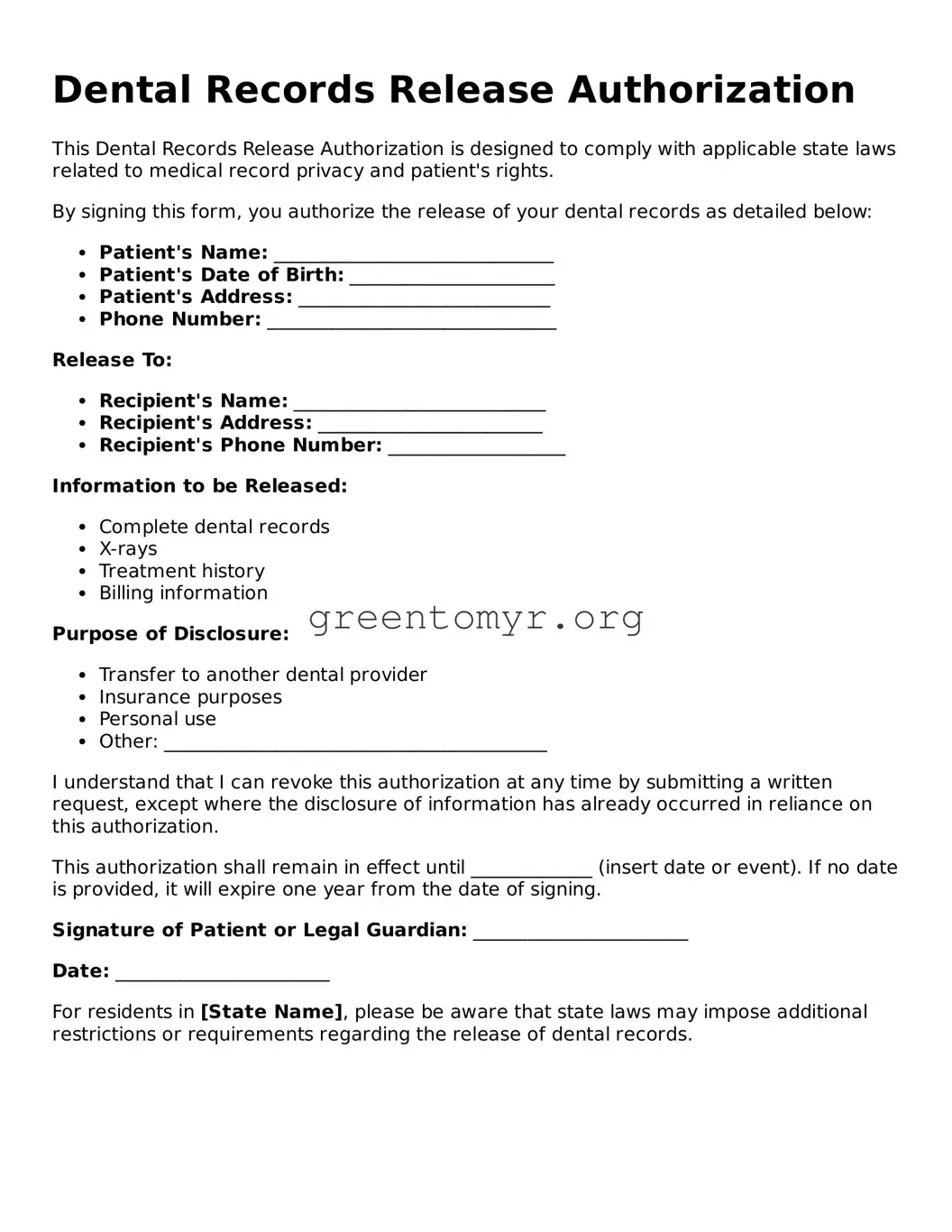Dental Records Release Authorization
This Dental Records Release Authorization is designed to comply with applicable state laws related to medical record privacy and patient's rights.
By signing this form, you authorize the release of your dental records as detailed below:
- Patient's Name: ______________________________
- Patient's Date of Birth: ______________________
- Patient's Address: ___________________________
- Phone Number: _______________________________
Release To:
- Recipient's Name: ___________________________
- Recipient's Address: ________________________
- Recipient's Phone Number: ___________________
Information to be Released:
- Complete dental records
- X-rays
- Treatment history
- Billing information
Purpose of Disclosure:
- Transfer to another dental provider
- Insurance purposes
- Personal use
- Other: _________________________________________
I understand that I can revoke this authorization at any time by submitting a written request, except where the disclosure of information has already occurred in reliance on this authorization.
This authorization shall remain in effect until _____________ (insert date or event). If no date is provided, it will expire one year from the date of signing.
Signature of Patient or Legal Guardian: _______________________
Date: _______________________
For residents in [State Name], please be aware that state laws may impose additional restrictions or requirements regarding the release of dental records.
